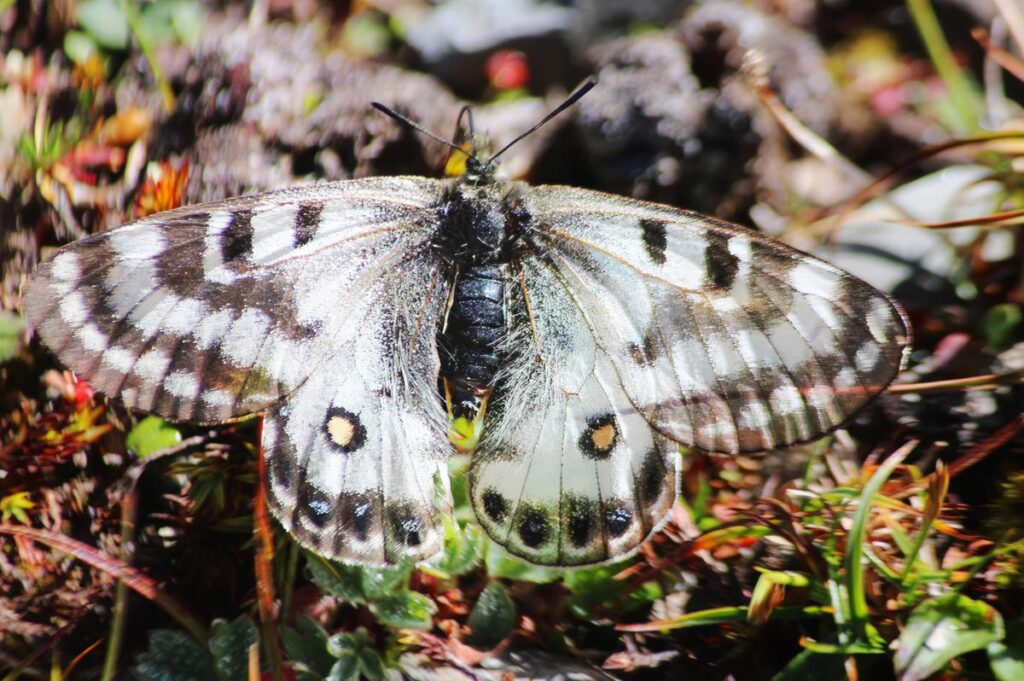Discovering the Dusted Apollo Butterfly
Encounter in the Himalayas
Gajinder Verma and Abinash Thakur, forest guards of Chamba Forest Circle, made an extraordinary discovery during their trek to Manimahesh Lake in Himachal Pradesh in September 2023. They sighted and photographed the elusive Dusted Apollo butterfly, marking the first documented encounter with this rare species in the region.
Insights into the Dusted Apollo
Habitat and Distribution
The Dusted Apollo butterfly is known for its habitat in high-altitude regions, with a distribution range stretching from Ladakh to west Nepal. Typically found flying at elevations between 3,500 to 4,800 meters amidst the inner Himalayas, this species was initially recorded in 1890.

Conservation Concerns
Commercial Value and Threats
Apollo butterflies, including the Dusted Apollo, hold significant commercial value and are often targeted by poachers. With five out of the eleven Apollo species classified as Scheduled species, the decline in butterfly populations poses serious conservation concerns. Efforts to protect and preserve these fragile ecosystems are crucial to safeguarding their future.
A Fascinating Discovery
The Dusted Apollo butterfly, a member of the snow Apollo genus (Parnassius), was first discovered in 1890. It inhabits the breathtaking landscapes of Ladakh to the serene realms of West Nepal, gracefully fluttering amidst elevations ranging from 3,500 to 4,800 meters in the inner Himalayas.
Unique Characteristics
This exquisite species shares striking similarities with the Ladakh Banded Apollo (Parnnasius stoliczkanus), yet it boasts distinctive features that set it apart. Notably, the Dusted Apollo showcases a complete discal band on its upper forewing, extending seamlessly from costa to vein one. In contrast, the Ladakh Banded Apollo’s discal band remains incomplete, reaching only up to vein four.
Encounters with Rarity
The remarkable sighting of the Dusted Apollo also unveiled another elusive inhabitant of the region: the Regal Apollo (Parnnasius charltonius). This majestic species is protected under Schedule II of the Wildlife Protection Act, 1972, and adds another layer of enchantment to the natural wonders found amidst the Himalayan landscapes. charltonius). Protected under Schedule II of the Wildlife Protection Act, 1972, this majestic species adds another layer of enchantment to the natural wonders found amidst the Himalayan landscapes.
